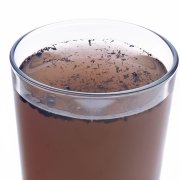What is Legionella Bacteria?
Legionella bacteria is a gram-negative bacteria that is shaped like a rod and can cause heath conditions that are collectively referred to as legionellosis, including the serious flu-like condition Legionnaires’ disease.
Legionella bacteria can be found in many natural aquatic environments, usually at low concentrations, although there are recorded cases of it also being discovered in soil and potting composts.
Legionella pneumophila
There are currently up to 50 species and 70 serogroups of the bacterium identified by scientists, although the species Legionella pneumophila (L. pneumophila) is considered to be the most serious of all, being responsible for over ninety percent of all cases of Legionnaires’ disease that have been discovered.
Where does Legionella bacteria come from?
Legionella bacteria occurs naturally and can be found at low concentrations in rivers, reservoirs, lakes and other watercourses.
There are also some recorded cases of it being discovered in soil and potting composts although these are rare.
However it can flourish in man-made environments including engineered water systems if the ideal conditions are presented for this to happen.
Where was the first recorded outbreak of Legionnaires’ disease?
Legionella and the condition called Legionnaires’ disease were named after the first recorded outbreak of a then unknown but serious flu-like condition that affected lots of people attending a convention of the American Legion in the US city of Philadelphia during July 1976.
In total 221 people were recorded as having contracted Legionnaires’ disease, with 34 deaths.
What is Legionnaires’ disease?
Legionella bacteria can cause Legionnaires’ disease which is a type of pneumonia that can affect anyone but can be more serious for some people.
Those at increased risk include people who already have compromised health in some way including chronic respiratory or kidney disease, the elderly, smokers and alcoholics.
The symptoms of Legionnaires’ disease present in a very similar way to flu, so it is likely that many people who contract the disease are not diagnosed until a later stage.
Legionella bacteria can be treated effectively with antibiotics.
An early diagnosis and a good treatment programme can also help reduce the chances of someone suffering longer term problems after they recover.
Legionella bacteria in engineered water systems
Engineered water systems that are known to be at a higher risk of harbouring elevated levels of legionella bacteria include cooling towers and wet air conditioning plant, domestic hot and cold water systems including showers and spray taps, hot tubs, hydrotherapy baths, dental waterlines, atomisers, vehicle wash systems, industrial cutting fluids, ice-making machines, decorative fountains, misting systems and more.
Airborne spread of legionella through contaminated aerosols
It is interesting to note that recent research has shown that legionella contaminated water droplets originating from cooling towers, when airborne can be carried at least 6 km from the tower which is much further than was originally thought possible.
This extends the size of population that are potentially at risk from a poorly or un-managed cooling tower and that becomes contaminated with legionella bacteria.
Legionella compliance to the Health & Safety Executives ACOP L8
In the UK the control of Legionella bacteria in engineered water systems is dealt with by the Health & Safety Executive in their Approved Code of Practice (ACOP) L8, and guidance document HSG274 which is split in to three parts.
These documents set out suitable control measures and acceptable levels of legionella bacteria that may be present in certain water sources from systems such as cooling towers, domestic hot and cold water systems, hot tubs and the like.
Using temperature to control legionella
Legionella bacteria grow well when they have nutrients to feed on and the water temperatures are between 20 and 45 degrees Celsius.
Because legionella bacteria are dormant below 20 degrees Celsius and are killed when the temperature goes above 60 degrees Celsius, the objective of any thermal control water treatment programme should be to keep the cold water cold and the hot water hot. Typical temperature control measures include:
- Cold water should be stored and distributed at temperatures below 20 degrees Celsius.
- Hot water should be distributed at 50 degrees Celsius or higher. If there is a risk of scalding thermostatic mixer valves should be installed (55 degrees Celsius in healthcare premises).
- Hot water storage cylinders (calorifiers) should store water at 60 degrees Celsius or higher.
Alternative control measures
If temperature control measures cannot be achieved effectively then alternative methods of legionella control, including chemical water treatment (chlorine dioxide) can used.
However, to ensure such alternative methods of control remain effective their full details including installation, maintenance and monitoring will need to be carefully considered in the legionella risk assessment and formal written scheme of control.
Legionella testing
The Health & Safety Executive also recommend that periodically water samples should be taken and tested for the presence of legionella bacteria to ensure bacteria counts are maintained within acceptable limits, more on our testing services here…
The frequency of such legionella testing should reflect the level of risk, and the recommendations of the risk assessment.
World class legionella risk management solutions
Water Treatment Services are a leading independent UK water management company offering expert legionella risk management solutions including professional water treatment and water hygiene services, water sampling, laboratory analysis and full support services to ensure the risks associated with Legionnaires’ disease are managed to meet the compliance standards set by the Health & Safety Executive.
With offices in London serving the South and South East England, Manchester (North West), Birmingham (Midlands), Bristol (South East England and Wales), Leeds (North and North East) and Glasgow (Scotland), supported by regional teams of specially trained engineers, site service specialists and technical experts we can offer legionella risk management and ACOP L8 compliance solutions across the whole of the UK.
Contact us today to learn how our legionella risk management solutions can ensure your risks are managed effectively and the health and safety compliance standards set in this important area are achieved… contact us →
Further reading…
More information about the Health & Safety Executives ACOP L8 here →











